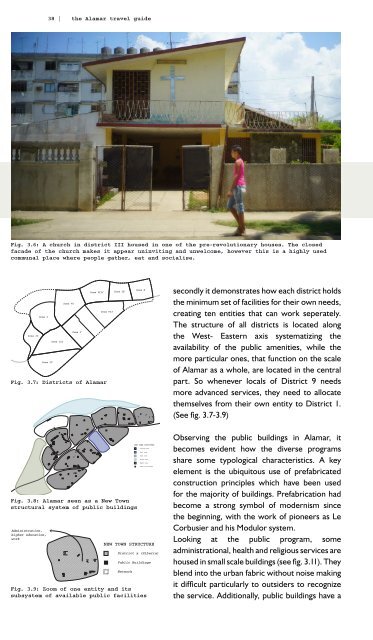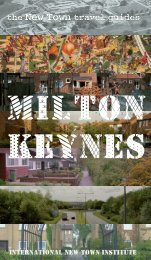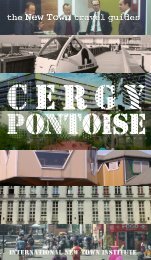You also want an ePaper? Increase the reach of your titles
YUMPU automatically turns print PDFs into web optimized ePapers that Google loves.
Living zone<br />
Work zone<br />
Park zone<br />
Beach zone<br />
Empty zone<br />
Public buildings<br />
38 | the <strong>Alamar</strong> travel guide<br />
Fig. 3.6: A church in district III housed in one of the pre-revolutionary houses. The closed<br />
facade of the church makes it appear uninviting and unwelcome, however this is a highly used<br />
communal place where people gather, eat and socialise.<br />
Zona VIII Zona IX<br />
Zona VI<br />
Zona VII<br />
Zona I<br />
Zona V<br />
Zona II<br />
Zona III<br />
Zona IV<br />
Fig. 3.7: Districts of <strong>Alamar</strong><br />
Zona X<br />
secondly it demonstrates how each district holds<br />
the minimum set of facilities for their own needs,<br />
creating ten entities that can work seperately.<br />
The structure of all districts is located along<br />
the West- Eastern axis systematizing the<br />
availability of the public amenities, while the<br />
more particular ones, that function on the scale<br />
of <strong>Alamar</strong> as a whole, are located in the central<br />
part. So whenever locals of District 9 needs<br />
more advanced services, they need to allocate<br />
themselves from their own entity to District 1.<br />
(See fig. 3.7-3.9)<br />
Fig. 3.8: <strong>Alamar</strong> seen as a New Town<br />
structural system of public buildings<br />
Administration,<br />
higher education,<br />
work<br />
NEW TOWN STRUCTURE<br />
NEW TOWN STRUCTURE<br />
District x (Siberia)<br />
Public Buildings<br />
Network<br />
Fig. 3.9: Zoom of one entity and its<br />
subsystem of available public facilities<br />
Observing the public buildings in <strong>Alamar</strong>, it<br />
becomes evident how the diverse programs<br />
share some typological characteristics. A key<br />
element is the ubiquitous use of prefabricated<br />
construction principles which have been used<br />
for the majority of buildings. Prefabrication had<br />
become a strong symbol of modernism since<br />
the beginning, with the work of pioneers as Le<br />
Corbusier and his Modulor system.<br />
Looking at the public program, some<br />
administrational, health and religious services are<br />
housed in small scale buildings (see fig. 3.11). They<br />
blend into the urban fabric without noise making<br />
it difficult particularly to outsiders to recognize<br />
the service. Additionally, public buildings have a




